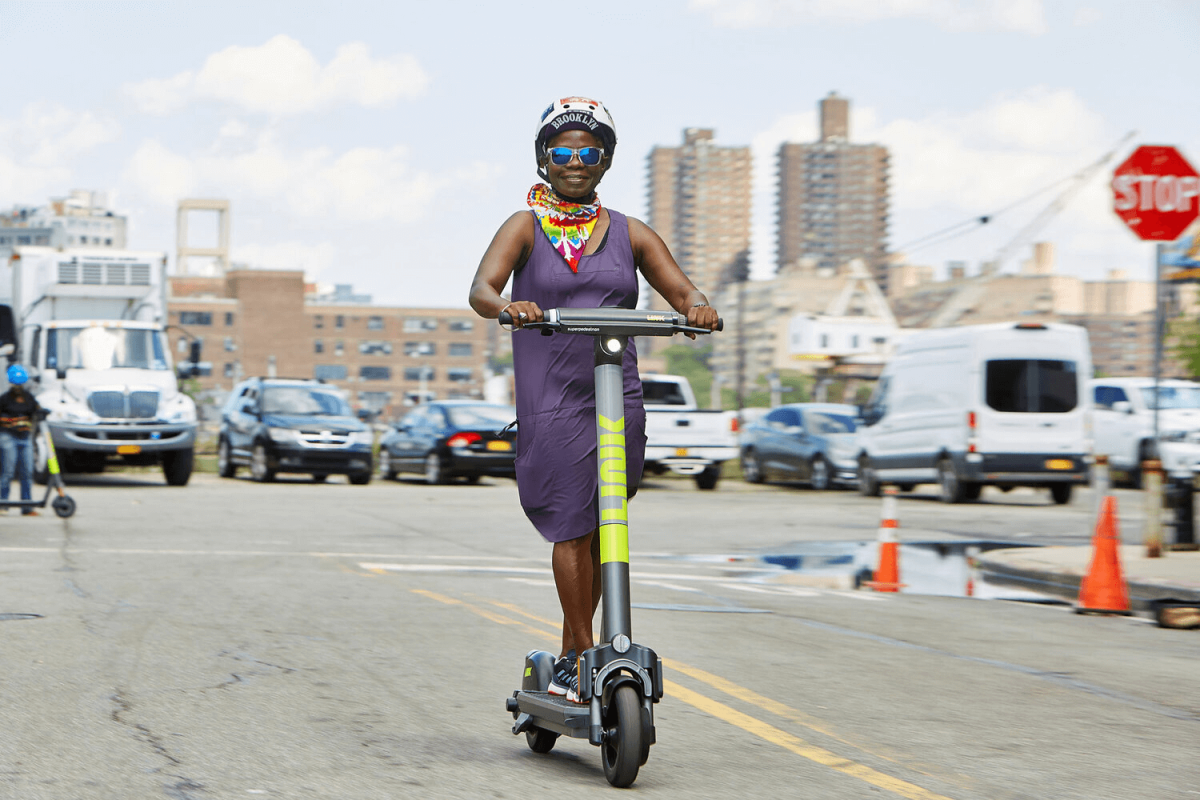A safer way to scoot about your neighborhood being pitch to the city Department of Transportation by Superpedestrian, whose leaders hope to bring LINK to specifically low income communities in the outer boroughs.
LINK scooters have on-board geofencing technology that will control speed, among other things, depending on where the rider navigates the device and your local bodega will likely be the best place to find them if they are approved for use on New York City streets.
Paul Steely White, Director of Safety and Public Affairs at Superpedestrian, told amNewYork that the technology offered by LINK, now in several cities, is superior to similar geofencing programs in that it cuts out the middle man: the cloud.
“So, [competitor’s scooters] have to go to the cloud to get the geofence and then it gets sent back to the scooter and, so, by the time that information is reconciled with the scooter, several seconds can elapsed and all of a sudden the scooters in the park. So, because of the level of engineering and computation that lives on our scooters, we’re able to actually load those coordinates those, geofencing maps onto the scooters themselves,” White said.
Superpedestrian, the company behind LINK, is currently on a quest to find the best locations for New Yorkers to get their bacon, egg, n’, cheeses before taking off to their next destination in the course of their daily routine.
To make their case more compelling for city leaders coming to a decision on whether or not to authorize their use, LINK touts something other services of it’s kind lack: a clean safety record. The company says that 98.7% of their scooters are still on the road today after initial deployment and that there have been no recorded serious injuries on one.
“For example, with our geofencing, if [users] park properly we give them a discount on their next ride, if they don’t park properly, we fine them,” White said. “So it’s a lot of these little incentives and disincentives that really work better than just telling people do the right thing, because we know that that often doesn’t work and we can’t rely on education alone. So we make our scooters self enforcing the same way you can’t stop speeding drivers just by putting a sign on the street. You’ve got to have speed cameras, you’ve got to have traffic calming. I think that’s a good analogy for the approach we’ve taken with our scooters.”
With over $75 million invested in research and development for LINK, the company expects to reap swift returns on their investments.
Autonomous maintenance lets the company know when a scooter will need to be serviced before the issue becomes a more costly issue, meaning the break even point for LINK is much lower than other services such as CitiBike, White said. Each scooter pays for itself at 0.7 trips per day. Similar companies generally need to meet three to four trips per day in order to break even, according to White.
After years of false starts for the e-bike and e-scooter world, Governor Andrew Cuomo ultimately allowed legislation through to approve these types of vehicles in New York, with stipulations such as helmet requirements. Following that victory for advocates, the city DOT issued a request for expressions of intent in October.
LINK was one of the 15 shared scooter companies who submitted applications and has made the final round before two to five companies will be granted permits to operate 1,000 or more scooters each. None of these will be allowed to operate in Manhattan under the program.
With speeds capped at 15 miles per hour in most cities where LINK operates, new riders will go slower until they pass safety test and prove they are competent behind the handle bars.
According to White, e-scooters are regarded as a “first and last mile solution,” so the company is first looking to provide the service to transit desert communities in the Bronx.



































